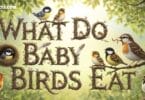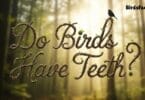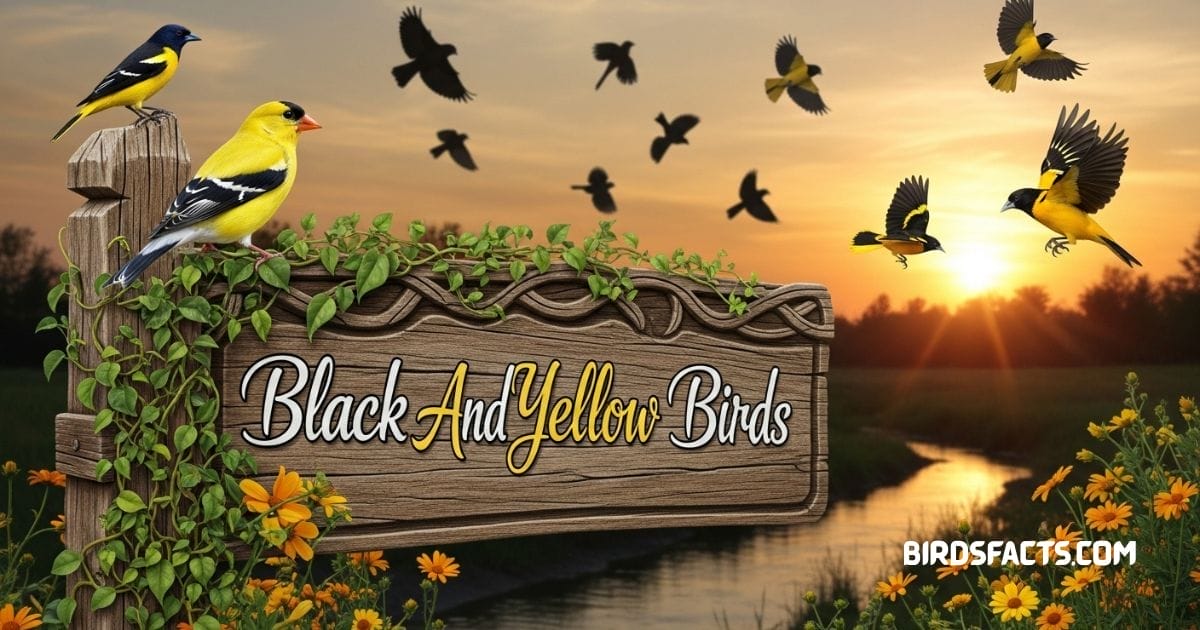
17 Stunning Black And Yellow Birds You Should Know
Have You Ever Spotted A Bright Bird In Your Back Yard And Wondered What It Was? Sometimes It’s Confusing Because So Many Species Share The Same Striking Colors. If You’ve Been Curious About Black And Yellow Birds You’re Not Alone Bird Lovers Every Where Find These Little Flashes Of Color Fascinating And Sometimes Tricky To Identify.
The Good News Is Once You Know What To Look For It’s Easier Than You Think. From Tiny Goldfinches To Bold Meadowlarks Black And Yellow Birds Are Some Of The Most Eye Catching Species You’ll Come Across. In This Guide We’ll Explore The Most Common Ones Their Habits And How You Can Spot Them In The Wild.
Black And Yellow Birds
- American Goldfinch
- Common Yellowthroat
- Eastern Meadowlark
- Evening Grosbeak
- Hooded Oriole
- Hooded Warbler
- Lesser Goldfinch
- Orchard Oriole (Female)
- Pine Warbler
- Prairie Warbler
- Scott’s Oriole
- Western Meadowlark
- Western Tanager
- Wilson’s Warbler
- Yellow Warbler
- Yellow-Headed Blackbird
- Yellow-throated Warbler
American Goldfinch

American goldfinch perched on branch with bright yellow body black wings and white markings
The American Goldfinch Is One Of The Most Recogniz Able Black And Yellow Birds In North America Males Turn A Brilliant Lemon Yellow In Summer Accented By A Sharp Black Forehead Wings And Tail During Winter Their Plumage Becomes More Olive Helping Them Blend Into Leafless Landscapes You Will Often Spot These Cheerful Finches Flocking Around Bird Feeders Filled With Sunflower Or Thistle Seed They Breed In Northern Regions Of The United States And Southern Canada Then Migrate Southward For Winter Though Some Remain Year Round In Milder Climates.
Goldfinches Prefer Open Spaces Like Meadows Fields And Suburban Yards With Plenty Of Weedy Plants Their Flight Is Easy To Recognize A Bouncing Pattern With Musical Calls That Sound Like Per Chick O Ree They Are Also Late Nesters Compared To Most Birds Waiting Until Mid Summer When Seeds Are Abundant Their Nests Woven With Plant Fibers And Lined With Down Are Often Placed In Shrubs Or Small Trees Watching A Male Goldfinch In Full Breeding Colors Against A Blue Sky Is One Of The Great Joys Of Backyard Birding And Seeing Them Alongside Other Black And Yellow Birds Makes The View Even More Striking For Bird Lovers Observing Different Black And Yellow Birds Together Is A Reminder Of Natures Beauty In Motion.
| Feature | Detail |
|---|---|
| Plumage | Bright Yellow Body With Black Wings And Cap |
| Range | Common At Bird Feeders And Weedy Fields Across North America |
| Flight | Distinctive Bouncy Flight Pattern |
| Call | Cheerful Song Often Given In Flight |
Common Yellowthroat
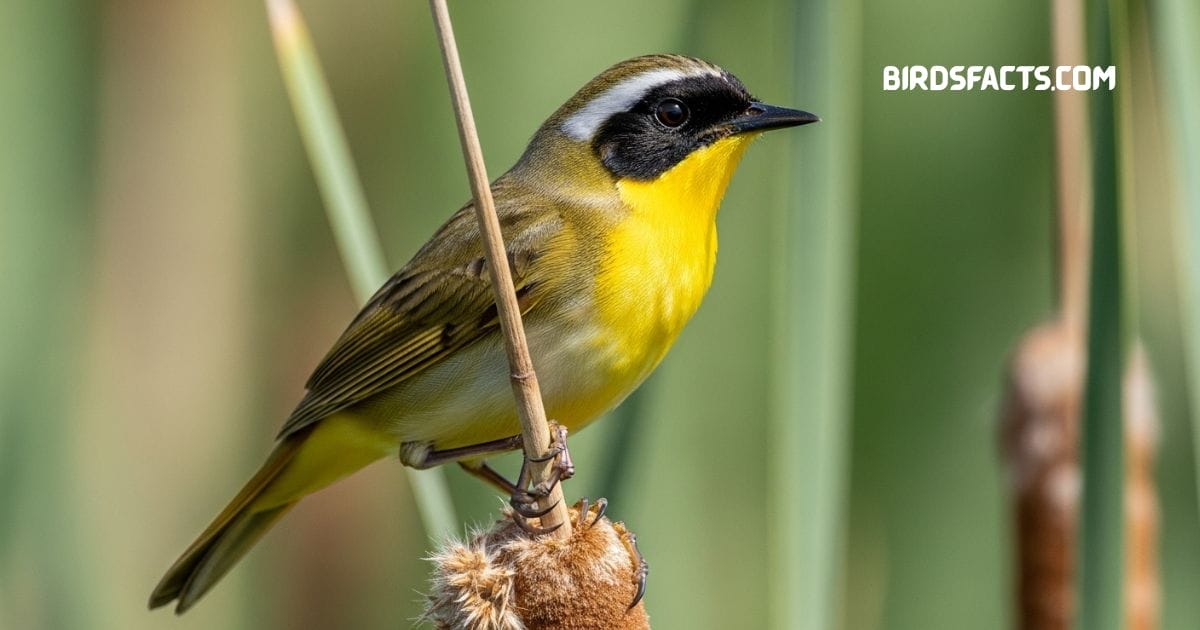
Common yellowthroat perched on reed with olive back yellow throat and black mask
The Common Yellowthroat Is A Small Warbler That Is Instantly Recogniz Able By Its Bold Black Face Mask Males Wear This Mask Like A Bandit Set Against Bright Yellow Throats And Underparts And They Are Often Counted Among The Most Distinctive Black And Yellow Birds Females Lack The Mask But Still Show Warm Yellow Coloration Especially On The Chest And Throat These Birds Thrive In Wetlands Marshes And Shrubby Thickets Where They Can Stay Hidden While Foraging Their Energetic Witchety Witchety Witch Song Often Gives Them Away Before You See Them.
Although Secretive Common Yellowthroats Are Widespread Across North America And Are Common Summer Breeders They Migrate South To Mexico Central America And The Caribbean For Winter Their Preference For Dense Vegetation Means They Play An Important Role In Controlling Insect Populations Especially Mosquitoes And Beetles For Birdwatchers Spotting The Flash Of Yellow In Cattails Or Hearing Their Lively Song Is A Rewarding Experience Seeing Them Alongside Other Black And Yellow Birds Adds Even More Beauty To The Scene They Are Often Among The First Black And Yellow Birds People Learn To Identify Because Of Their Distinctive Mask And Cheerful Presence.
| Feature | Detail |
|---|---|
| Plumage | Small Warbler With Bright Yellow Throat And Chest |
| Markings | Males Feature A Bold Black Face Mask |
| Habitat | Found In Wetlands / Cattails / Shrubby Edges |
Eastern Meadowlark
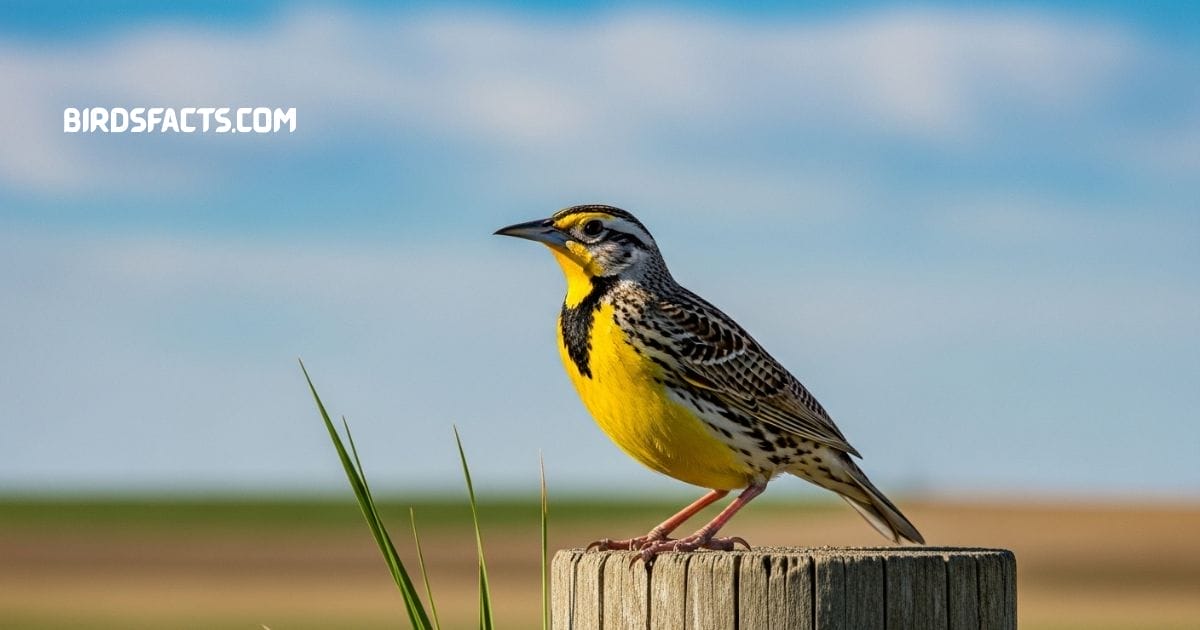
Eastern meadowlark perched on fence post with bright yellow chest brown streaked back and black V marking
The Eastern Meadowlark Is Famous For Its Bold Black V Across A Bright Yellow Chest This Medium Sized Songbird Prefers Open Fields Prairies And Farm Lands Where Its Flute Like Whistles Carry Across The Land Scape Their Brown And White Streaked Backs Help Them Blend Into Grasslands Making Them Surprisingly Hard To Spot Until They Perch On A Fencepost Or Rise Into The Air To Sing And They Are Often Recognized As Classic Black And Yellow Birds Farmers Often Welcome Meadowlarks Because They Consume Insects That Would Other Wise Harm Crops.
These Birds Build Dome Shaped Nests On The Ground Carefully Hidden Under Tall Grasses They Are Year Round Residents In Parts Of The Southern United States But Northern Populations Migrate South For Winter Despite Their Widespread Distribution Meadowlark Numbers Have Declined Due To Habitat Loss From Agriculture And Urbanization Still Their Musical Songs Remain A Cherished Sound In Rural Landscapes And Their Presence Alongside Other Black And Yellow Birds Adds To The Beauty Of Open Country For Bird Watchers The Eastern Meadowlark Represents One Of The Most Iconic Black And Yellow Birds Of The Prairie.
| Feature | Detail |
|---|---|
| Plumage | Yellow Chest With Distinctive Black V Marking |
| Song | Flute Like Melodic Whistles |
| Habitat | Ground Nester Found In Grasslands And Farmlands |
Evening Grosbeak

Evening grosbeak perched on branch with yellow body black wings and large pale bill
The Evening Grosbeak Is A Stocky Striking Finch With A Massive Pale Bill Built For Cracking Seeds Males Are Unmistak Able With Their Bright Yellow Bodies Bold Black Wings And Large White Wing Patches And They Are Often Counted Among The Most Impressive Black And Yellow Birds Females And Young Birds Are More Subdued Wearing Grayish Tones With Hints Of Yellow These Birds Are Found Mainly In Northern Coniferous Forests But During Winter They May Wander South In Search Of Food Sometimes Appearing At Backyard Feeders In Large Noisy Flocks Their Presence Is Often A Delightful Surprise For Bird Watchers.
Evening Grosbeaks Are Strong Fliers And Can Cover Long Distances During Food Shortages They Primarily Eat Seeds Buds And Fruits But Also Take Insects When Available Their Loud Cleer Calls Echo Through Forests Alerting Birders To Their Arrival Even Before They Are Seen Seeing Them Alongside Other Black And Yellow Birds Makes The Scene Even More Spectacular Once Common Across Much Of North America Populations Have Declined In Recent Decades Making A Sighting Extra Special Spotting A Flock Of Evening Grosbeaks At A Feeder Feels Like Witnessing A Flash Of Golden Sunlight Against The Snow And Reminds Bird Lovers Why Black And Yellow Birds Are So Captivating.
| Feature | Detail |
|---|---|
| Plumage | Bright Yellow With Black Wings And White Wing Patches |
| Bill | Thick Heavy Seed Cracking Bill |
| Habitat | Often Found In Northern Forests And Winter Flocks |
Hooded Oriole
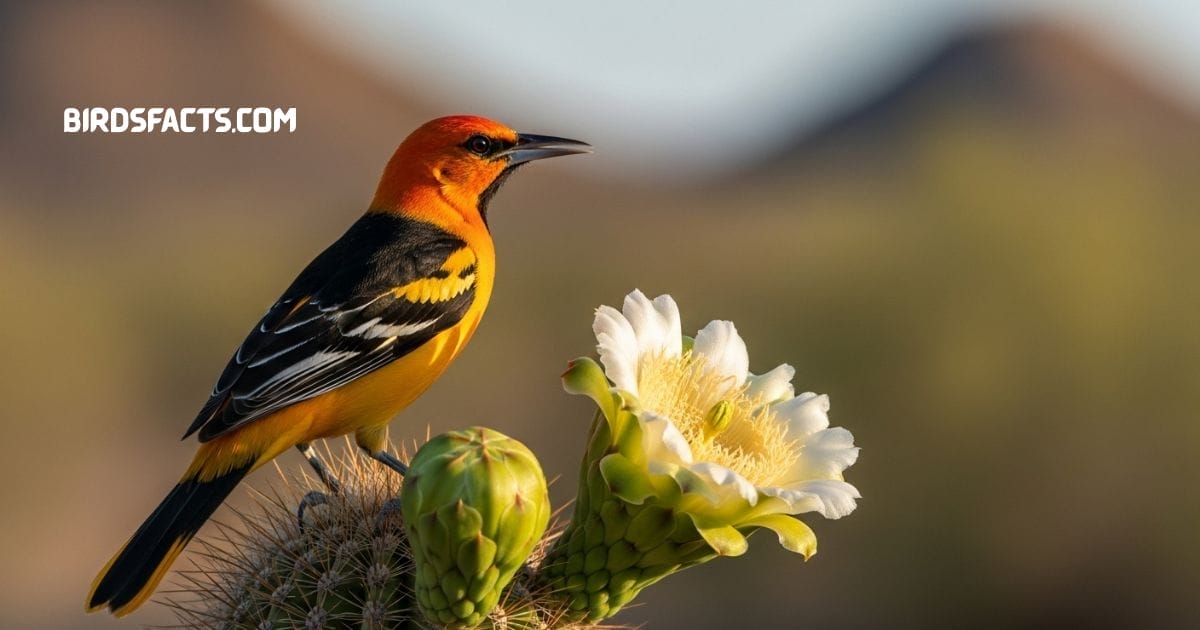
Hooded oriole perched on branch with bright orange yellow body black throat and slender curved bill
The Hooded Oriole Adds A Splash Of Tropical Brilliance To The American Southwest Males Wear A Vibrant Yellow Orange Hood With A Contrasting Black Throat Wings And Tail And They Are Often Counted Among The Most Beautiful Black And Yellow Birds Females And Juveniles Are More Olive Yellow Lacking The Deep Black Face And Chest They Are Closely Associated With Desert Foothills Palm Trees And Gardens Especially In Areas Where Ornamental Palms Are Planted You Might See Them Darting Through Backyards Or Sipping Nectar From Hummingbird Feeders.
Their Nests Are Masterpieces Of Avian Architecture Females Weave Hanging Baskets From Long Grass Or Palm Fibers Often Suspending Them Under Palm Fronds These Orioles Are Insect Eaters But Will Readily Consume Fruit And Nectar Making Them Versatile Foragers Their Whistles And Chatter Add A Lively Soundtrack To Desert Mornings And Their Presence Alongside Other Black And Yellow Birds Brings Extra Color To The Scene For Bird Watchers Spotting A Hooded Oriole Among Different Black And Yellow Birds Feels Like Glimpsing A Moving Flame Among The Green Palms.
| Feature | Detail |
|---|---|
| Plumage | Bright Yellow Orange With Black Throat And Wings |
| Habitat | Prefers Palms / Gardens / Desert Foothills |
| Nesting | Builds Hanging Woven Nests Under Palm Fronds |
Hooded Warbler

Hooded warbler perched on branch with yellow face black hood and olive back
The Hooded Warbler Is A Small But Charismatic Bird Known For Its Bold Black Hood And Bright Yellow Face Males Are Instantly Recogniz Able While Females Wear Subtler Markings Without The Full Black Mask They Are Often Admired As One Of The Most Striking Black And Yellow Birds They Inhabit Eastern Deciduous Forests Where Thick Understory Growth Provides Cover Though They Are Often Hidden Their Cheerful And Rapid Ta Wit Ta Wit Tee Yo Song Rings Loudly Through The Woods.
These Warblers Are Agile Insect Hunters Flitting Rapidly Through Dense Shrubs In Search Of Prey During Migration They Are Common In The Southeastern United States And They Winter In Central America And The Caribbean For Birders Their Striking Appearance Makes Them Easier To Identify Than Many Warblers Which Can Often Look Confusingly Similar Their Presence Alongside Other Black And Yellow Birds Adds Extra Beauty To The Forest Their Preference For Shady Undergrowth Also Reminds Bird Lovers That Many Black And Yellow Birds Thrive Closer To The Forest Floor Than The Treetops.
| Feature | Detail |
|---|---|
| Plumage | Bright Yellow Face With Black Hood |
| Habitat | Found In Shady Understory Of Eastern Forests |
| Song | Rapid Cheerful Song Distinguishes Them |
Lesser Goldfinch
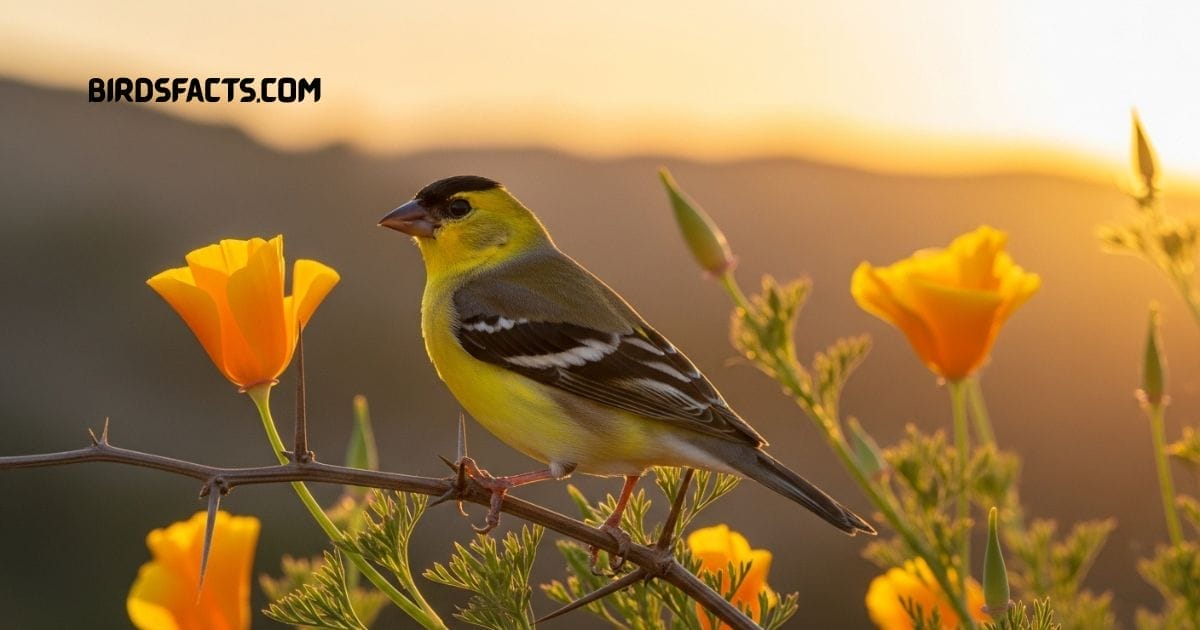
Lesser goldfinch perched on branch with bright yellow underparts black cap and greenish back
The Lesser Goldfinch Is A Small Lively Bird That Often Forms Flocks In Open Woodlands Gardens And Backyards Males In The Western United States Usually Have A Glossy Black Cap Bright Yellow Belly And Greenish Back Though Plumage Varies Across Regions They Are Often Admired As Some Of The Most Cheerful Black And Yellow Birds Females Are Duller Wearing Olive Yellow Shades Without The Black Cap They Are Especially Common In The Southwest But Range Widely Into Mexico And Central America Like Their American Cousins They Flock To Feeders Stocked With Sun Flower Or Thistle Seed.
These Energetic Finches Are Highly Social Often Singing From Exposed Perches While Fluttering Their Wings In Display Their Twittering Calls Are High Pitched And Musical Adding A Cheerful Background Sound In Parks And Gardens Their Presence Alongside Other Black And Yellow Birds Brings Even More Color To The Landscape Lesser Goldfinches Are Adapt Able And Thrive In A Range Of Habitats From Urban Yards To Rural Fields Watching A Flock Feeding Together Is A Lively Reminder Of How Much Personality Can Be Packed Into Such Small Black And Yellow Birds.
| Feature | Detail |
|---|---|
| Plumage | Small Finch With Black Cap And Yellow Underparts |
| Behavior | Social Often Found In Flocks At Feeders |
| Range | Extends Across Western United States Into Mexico |
Orchard Oriole (Female)

Orchard oriole female perched on branch with yellowish body olive back and sharp bill
The Female Orchard Oriole May Not Have The Fiery Black And Orange Plumage Of The Male But Her Olive Yellow Tones Are Just As Charming She Is Small Sleek And Graceful Often Seen In Orchards Riverside Woods And Gardens And Is Often Counted Among The Most Elegant Black And Yellow Birds Unlike The Males Which Are Striking In Appearance Females Blend In With Foliage Making Them A Bit Harder To Spot Still Their Soft Colors And Lively Movements Catch The Eye Once You Know What To Look For These Birds Are Insect Eaters But Also Enjoy Nectar And Fruit Making Them Frequent Visitors To Backyards With Flowering Trees.
Orchard Orioles Are Skillful Nest Builders Females Weave Pouch Like Nests That Hang From Tree Branches Carefully Constructed With Grasses And Plant Fibers They Are Widespread Across The Eastern United States During Summer Migrating To Central America For Winter While Less Flashy Than Their Male Counterparts Female Orchard Orioles Play An Equally Important Role In Raising Young And Maintaining The Species Their Presence Alongside Other Black And Yellow Birds Adds To The Beauty Of Summer Landscapes For Bird Watchers Catching Sight Of These Subtle Black And Yellow Birds Is A Gentle Reminder That Beauty Often Lies In Simplicity.
| Feature | Detail |
|---|---|
| Plumage | Olive Yellow Plumage Smaller Than Many Orioles |
| Nesting | Builds Hanging Pouch Like Nests |
| Habitat | Found In Orchards Riverside Woods And Gardens |
Pine Warbler

Pine warbler perched on tree branch with olive green back yellow throat and white belly
The Pine Warbler Is A Cheerful Little Bird Whose Song Echoes High In The Treetops Of Pine Dominated Forests Its Yellow Throat And Chest Stand Out Against An Olive Back While Faint Wing Bars Provide Additional Field Marks And They Are Often Recognized As Some Of The Most Pleasant Black And Yellow Birds Though They Resemble Other Yellow Warblers Their Preference For Pine Habitats Is The Easiest Way To Identify Them Unlike Many Warblers Pine Warblers Will Occasionally Visit Bird Feeders Especially In Winter Where They Eat Seeds Suet And Even Cracked Corn.
These Warblers Are Among The Earliest To Return In Spring Filling The Forest With Their Sweet Musical Trills They Primarily Forage High In The Canopy Plucking Insects And Caterpillars From Pine Needles However They Are More Versatile Than Most Warblers When It Comes To Diet Giving Them An Edge During Lean Seasons For Birdwatchers Hearing Their Bright Trill From The Treetops Often Signals You Have Stepped Into The Heart Of Pine Country And Their Presence Alongside Other Black And Yellow Birds Makes The Forest Come Alive Observing These Black And Yellow Birds In Their Natural Habitat Is Always A Rewarding Experience.
| Feature | Detail |
|---|---|
| Plumage | Yellow Throat And Chest With Olive Back |
| Song | Sweet Musical Trill |
| Habitat | Prefers Pine Forests But Occasionally Visits Feeders |
Prairie Warbler
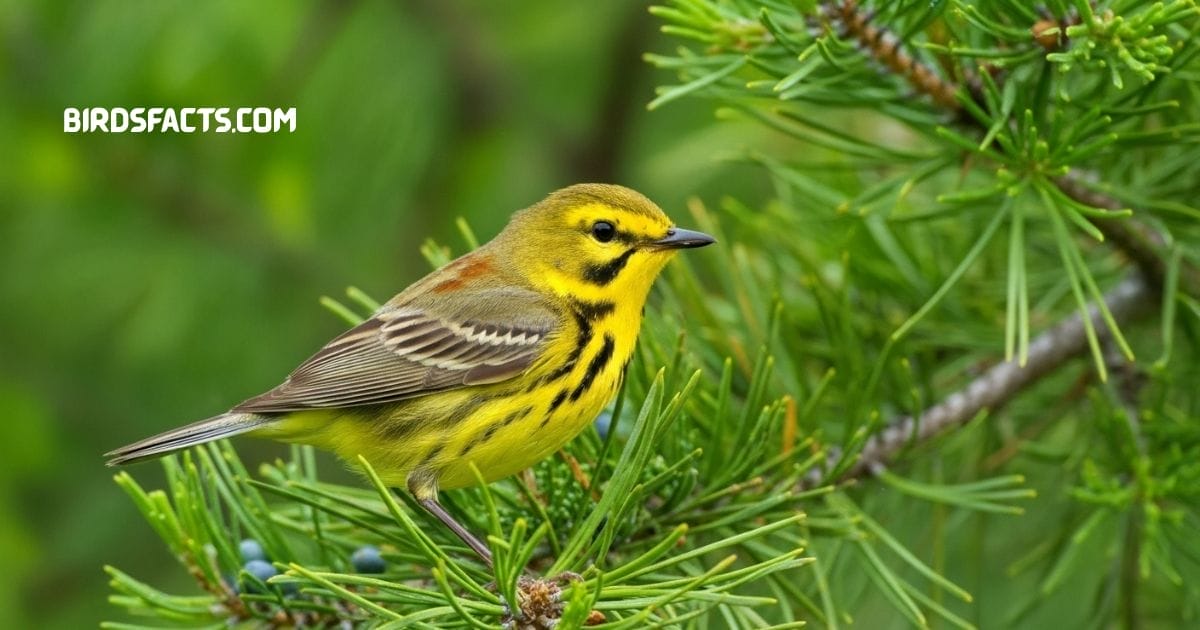
Prairie warbler perched on branch with bright yellow underparts olive back and black streaks
The Prairie Warbler Is A Tiny Burst Of Sunshine In Shrubby Fields And Open Woodlands Males Are Bright Yellow With Black Streaks Along Their Flanks Giving Them A Lively And Energetic Look And They Are Often Counted Among The Most Cheerful Black And Yellow Birds Their Buzzing Rising Song Is Unmistakable And Often Leads Birders To Them Before They Are Spotted Unlike The Name Suggests They Are More Often Found In Old Fields Scrubby Hillsides And Young Forests Than In True Prairies Their Constant Tail Wagging Behavior Is Another Good Clue When Identifying Them.
Despite Their Small Size Prairie Warblers Are Long Distance Migrants Wintering In The Caribbean And Parts Of Central America They Feed On Insects During The Breeding Season But Also Consume Small Fruits In Migration Habitat Loss Has Affected Their Populations But Where Shrubby Areas Remain Their Presence Brightens The Landscape For Birdwatchers These Little Warblers Are A Delight Both For Their Vibrant Color And Their Quirky Personalities And Their Presence Alongside Other Black And Yellow Birds Adds Extra Joy To The Scene Observing Different Black And Yellow Birds Together With Prairie Warblers Is Always A Rewarding Sight.
| Feature | Detail |
|---|---|
| Plumage | Bright Yellow Underparts With Black Streaks On Flanks |
| Song | Rising Buzzy Song |
| Habitat | Found In Shrubby Fields Hillsides And Young Forests |
Scott’s Oriole

Scott’s oriole perched on branch with bright yellow belly black head and black back
Scotts Oriole Is One Of The Most Dazzling Black And Yellow Birds Of The American Southwest Males Are Boldly Marked With A Bright Yellow Belly And Undertail Contrasting Sharply With Their Black Head Chest And Back Females And Young Birds Are Duller But Still Display Olive Yellow Plumage These Orioles Are Closely Associated With Desert Foothills And Areas Where Yuccas And Agaves Grow You Will Often Hear Their Strong Flute Like Songs Drifting Across Arid Land Scapes Long Before You Spot Them Perched High On A Yucca Stalk.
This Species Is Highly Adapted To Dry Environments They Build Their Nests In Yucca Plants Weaving Them Securely To Withstand The Wind Their Diet Includes Insects Fruits And Nectar Making Them Versatile Feeders In Tough Habitats Unlike Many Other Orioles Scotts Oriole Is Less Shy Often Perching In Visible Spots While Singing For Birdwatchers In The Southwest Encountering This Oriole Alongside Other Black And Yellow Birds Is Like Watching A Flash Of Golden Sunshine Illuminate The Desert Observing Different Black And Yellow Birds Together With Scotts Oriole Creates A Scene Full Of Color And Warmth.
| Feature | Detail |
|---|---|
| Plumage | Bright Yellow Belly With Black Head And Back |
| Habitat | Found In Desert Foothills With Yuccas And Agaves |
| Song | Strong Flute Like Song |
Western Meadowlark
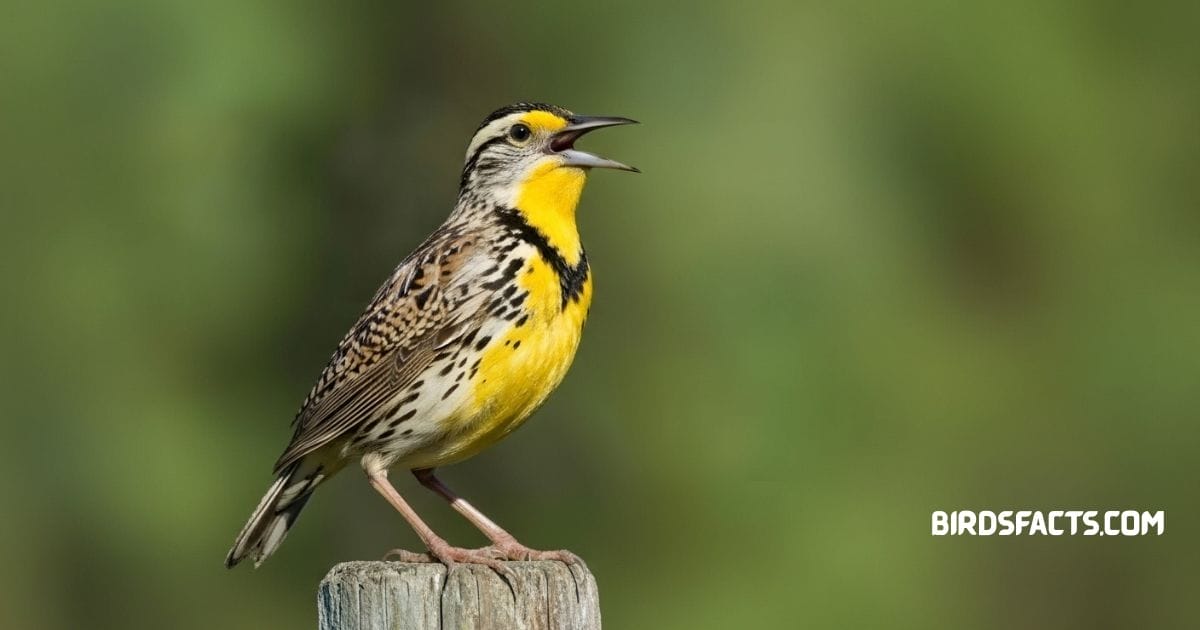
Western meadowlark perched on fence post with bright yellow chest brown streaked back and black V marking
The Western Meadowlark Is Closely Related To The Eastern Meadowlark But Can Be Distinguished By Its Richer More Complex Song Like Its Eastern Cousin It Features A Brilliant Yellow Chest With A Bold Black V Marking And It Is Often Admired As One Of The Most Iconic Black And Yellow Birds Its Back Is Mottled Brown And White Which Camouflages It Perfectly In Open Prairies And Farmlands This Species Is Particularly Symbolic Being The State Bird Of Six United States Including Montana Kansas And Nebraska.
Western Meadowlarks Forage Mainly On The Ground Eating Insects In Summer And Seeds In Winter Their Flute Like Melodies Are Among The Most Beautiful Bird Songs On The Continent Often Described As Liquid And Bubbling Nests Are Well Hidden In Grasses Sometimes With Overhead Coverings Built By The Female Although Their Populations Face Challenges From Habitat Loss Their Presence Alongside Other Black And Yellow Birds Remains An Essential Part Of Western Grasslands Spotting One Perched On A Fencepost Singing Against A Big Sky Backdrop Is A Classic Birdwatching Moment And A Reminder Of Why Black And Yellow Birds Are So Cherished Across The American Plains.
| Feature | Detail |
|---|---|
| Plumage | Yellow Chest With Bold Black V |
| Song | Rich Flute Like Song More Complex Than Eastern Meadowlark |
| Status | State Bird Of Six United States States |
Western Tanager
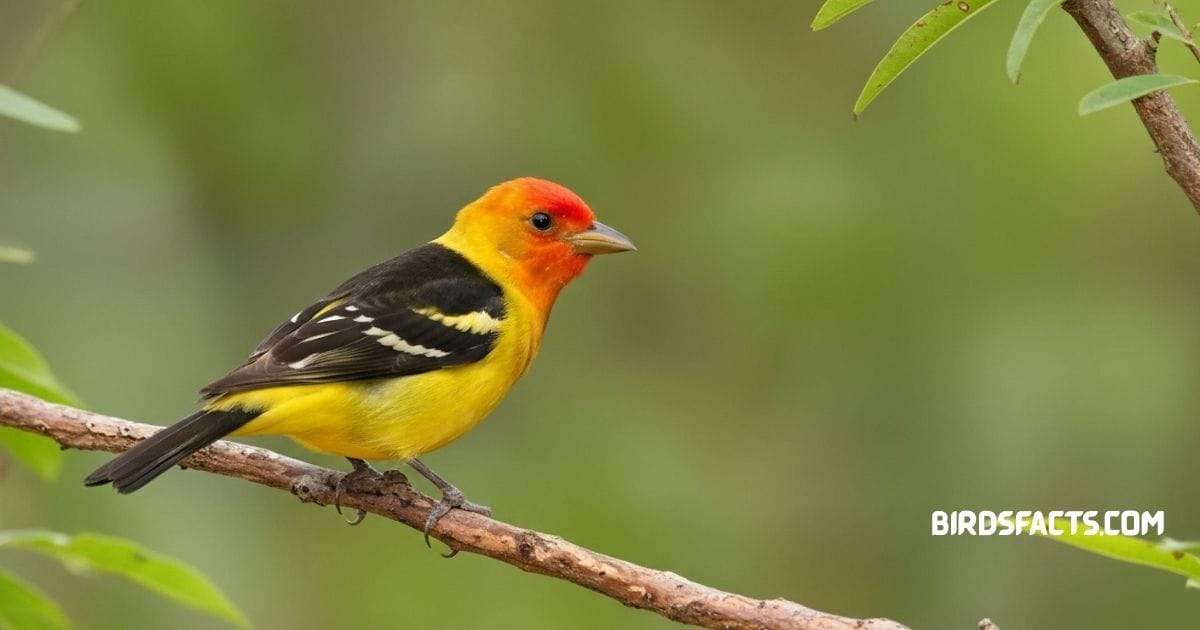
Western meadowlark perched on fence post with bright yellow chest brown streaked back and black V marking
The Western Tanager Is One Of The Most Colorful Songbirds In North America Males In Breeding Plumage Boast A Flaming Red Head Bright Yellow Body And Jet Black Wings With White Wing Bars And They Are Often Recognized As Some Of The Most Beautiful Black And Yellow Birds Females Are More Muted Wearing Olive Yellow And Gray These Birds Breed In Coniferous Forests Of The Western United States And Canada Making Them A Common Sight During Summer Hikes In The Rockies And Cascades Their Striking Colors Often Make Them Appear Almost Tropical Though They Are Native To North America.
Western Tanagers Feed On Insects During The Breeding Season Often Catching Them Mid Air In Flycatcher Like Fashion They Also Eat Fruits And Berries Especially During Migration And In Winter Despite Their Brilliant Plumage Their Song Is Surprisingly Modest Similar To A Hoarse Version Of A Robins Tune Each Spring Birdwatchers Eagerly Await Their Return And Seeing Them Alongside Other Black And Yellow Birds Signals The Start Of A Colorful Season For Nature Lovers Observing Different Black And Yellow Birds Together With Western Tanagers Brings The Beauty Of The Forest To Life.
| Feature | Detail |
|---|---|
| Plumage | Red Head Yellow Body Black Wings With White Bars |
| Habitat | Breeds In Coniferous Forests Of Western North America |
| Song | Resembles A Robin But Harsher |
Wilson’s Warbler
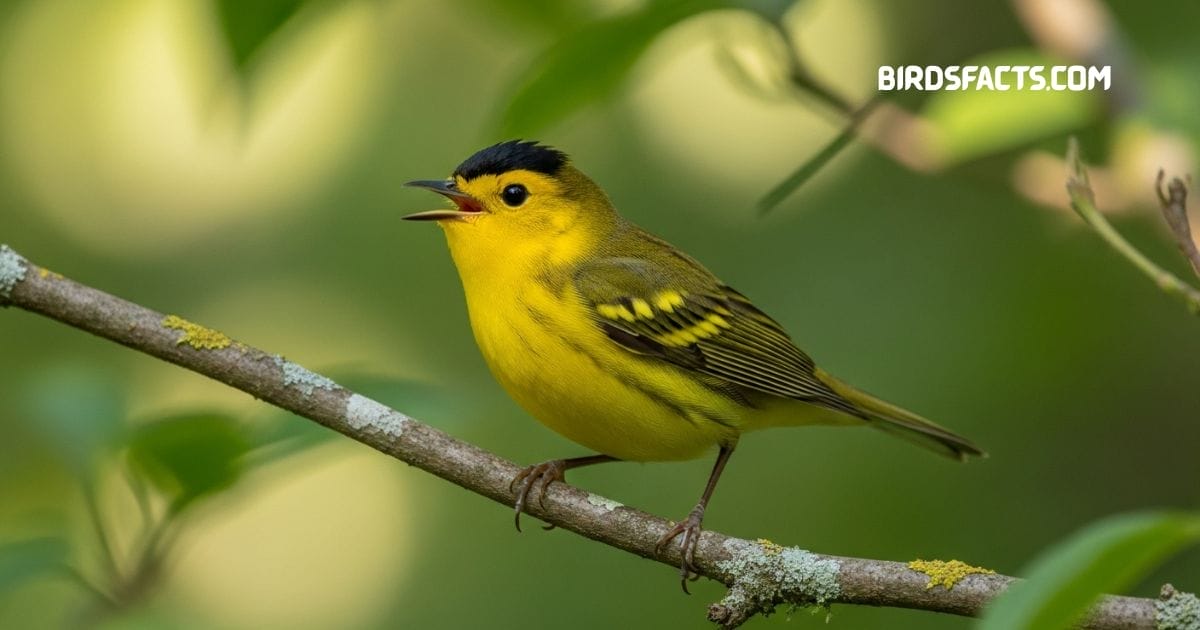
Wilson’s warbler perched on branch with bright yellow body olive back and small black cap
Wilsons Warbler Is A Tiny Energetic Bird That Brings A Spark Of Sunshine To Any Shrub Or Thicket Males Are Instantly Recognizable With Their Bright Yellow Plumage Capped By A Neat Black Crown And They Are Often Counted Among The Most Charming Black And Yellow Birds Females And Immatures Lack The Full Cap But Still Shine With Vibrant Yellow Bodies These Birds Flit Rapidly Through Dense Vegetation Making Them Both Delightful And Challenging To Spot Their Presence Is Often Announced By A Rapid Chattering Song That Carries Through Wetlands And Woodland Edges.
This Species Is Widely Distributed Across North America During Breeding Season And Migrates As Far As Central America For The Winter Wilsons Warblers Prefer Damp Habitats Such As Streamside Thickets And Boggy Woodlands Where Insects Are Abundant Their Constant Movement And Small Size Make Them A Joy To Watch As If They Are Little Flashes Of Gold Darting Through The Undergrowth Seeing Them Alongside Other Black And Yellow Birds Adds Even More Life To The Landscape For Many Birders The Combination Of Bold Color And Lively Behavior Makes Them One Of The Most Loved Black And Yellow Birds Across The Continent.
| Feature | Detail |
|---|---|
| Plumage | Tiny Warbler With Bright Yellow Body |
| Markings | Males Have A Small Black Crown |
| Behavior | Energetic Fast Moving Often In Thickets |
Yellow Warbler
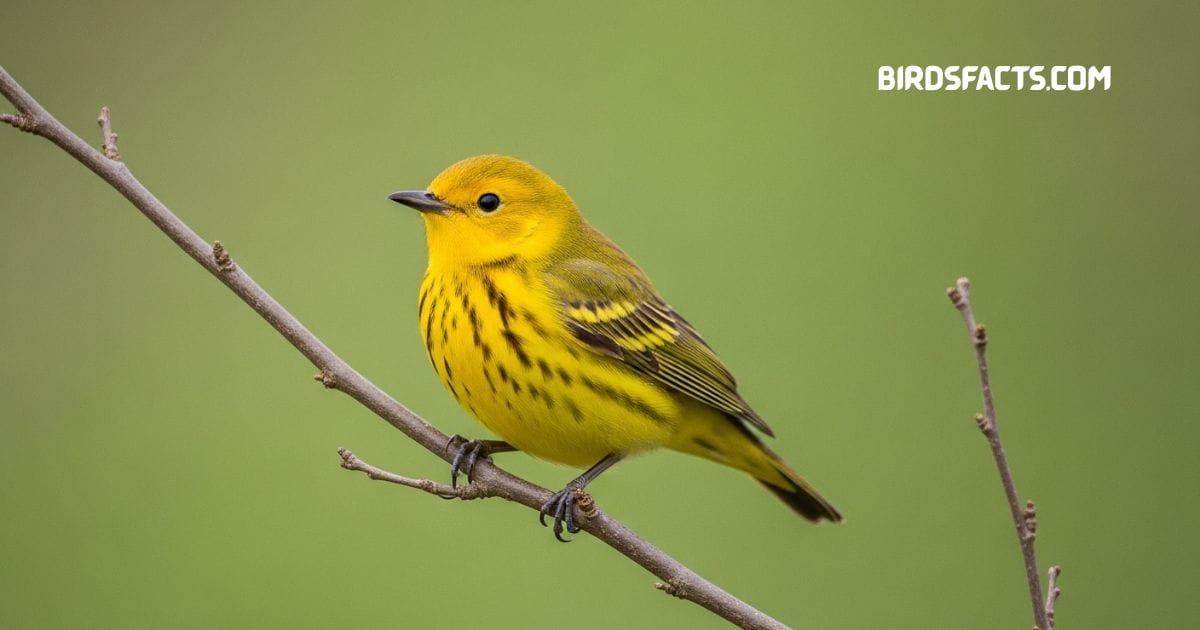
Yellow warbler perched on branch with bright yellow plumage reddish streaks and slender bill
Few Birds Are As Purely Yellow As The Yellow Warbler Males Glow Bright From Head To Tail Often With Faint Reddish Streaks On The Breast And They Stand Out Among The Most Radiant Black And Yellow Birds Females Are Slightly Duller But Still Shine With Unmistakable Warm Tones These Warblers Are Among The Most Widespread Across North America Breeding In Wetlands Thickets And Gardens From Coast To Coast Their Sweet Whistled Song Sweet Sweet Sweet Im So Sweet Is One Of The Most Joyful Sounds Of Spring.
Yellow Warblers Are Long Distance Migrants Traveling To Central And South America For Winter They Nest In Shrubs Or Small Trees Often Near Water And Are Diligent Parents Despite The Threat Of Cowbirds That Sometimes Invade Their Nests They Continue To Thrive Their Cheerful Energy And Brilliant Color Make Them A Favorite For Bird Lovers Everywhere When Seen With Other Black And Yellow Birds They Create A Stunning Display Of Sunshine In Nature For Many Birdwatchers The Yellow Warbler Perfectly Captures The Spirit Of Black And Yellow Birds Across The Americas.
| Feature | Detail |
|---|---|
| Plumage | Entirely Yellow Plumage With Reddish Streaks On Males |
| Song | Sweet Repetitive Im So Sweet Song |
| Habitat | Found In Wetlands Gardens And Thickets |
Yellow-Headed Blackbird
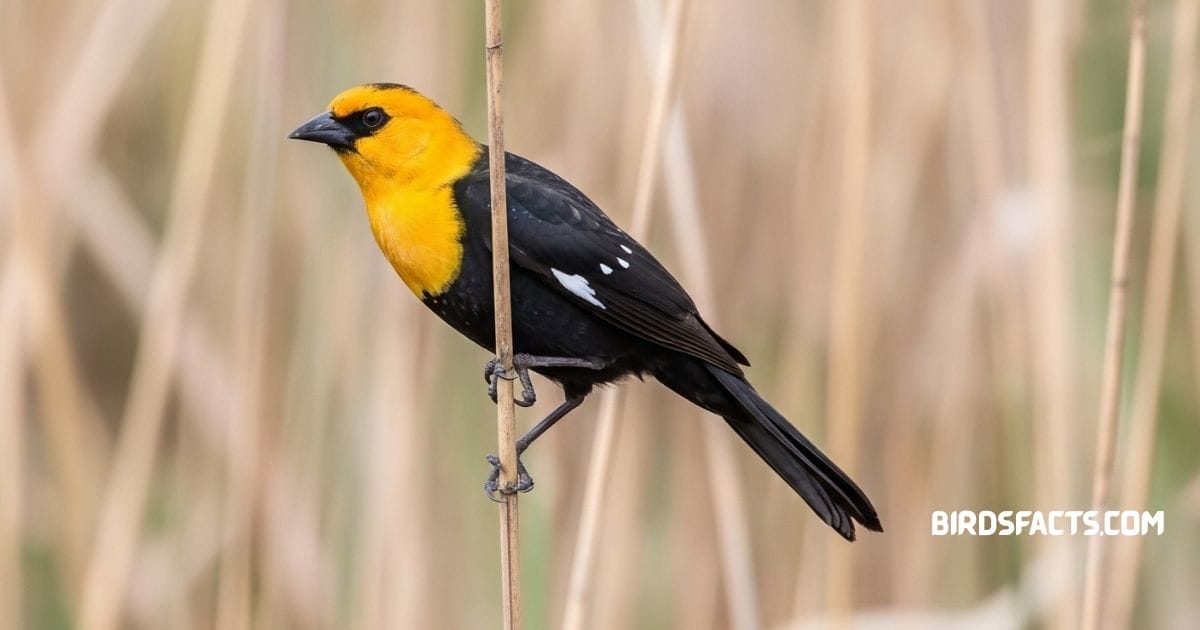
Yellow-headed blackbird perched on reed with bright yellow head black body and white wing patches
The Yellow Headed Blackbird Is One Of The Most Dramatic Looking Black And Yellow Birds In North America Males Display Striking Golden Yellow Heads And Chests That Contrast Sharply With Their Jet Black Bodies Females Are Browner Overall Yet Still Show Warm Yellow Tones These Birds Are Closely Linked To Wetlands Especially Cattail Marshes Where They Build Their Nests In Colonies Their Harsh Croaking Calls Are Distinctive And Often Described As Mechanical Rather Than Musical Yet They Perfectly Match The Bold Personality Of This Species.
During The Breeding Season Yellow Headed Blackbirds Often Dominate Marshlands Sometimes Even Outcompeting Red Winged Blackbirds For The Best Nesting Sites They Feed On Insects During Summer And Shift To Seeds And Grains In Winter Their Colonial Nature Makes Them A Favorite Subject For Birdwatchers Since Large Groups Move Together In Spectacular Displays Watching A Flock Rise From A Marsh In Unison Is A Breathtaking Sight And A Perfect Example Of The Power And Beauty Found Among Black And Yellow Birds Across The Continent Among All Black And Yellow Birds The Yellow Headed Blackbird Stands As A True Icon Of North American Wetlands.
| Feature | Detail |
|---|---|
| Plumage | Golden Yellow Head And Chest With Black Body |
| Call | Harsh Croaking Call |
| Habitat | Breeds In Cattail Marshes And Wetlands |
Yellow-throated Warbler
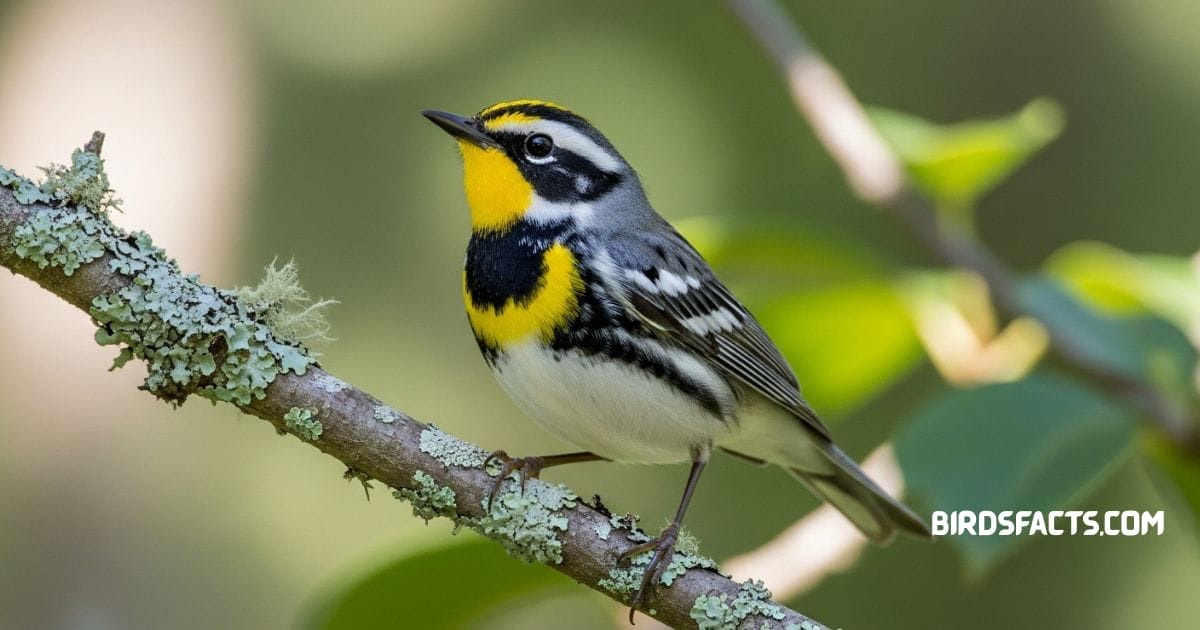
Yellow-throated warbler perched on branch with gray back yellow throat and black streaks
The Yellow Throated Warbler Is An Elegant Songbird With A Bright Yellow Throat Gray Back And Bold Black Streaks On Its Face And Sides Its Striking Mix Of Colors Makes It Stand Out Among The Most Graceful Black And Yellow Birds These Birds Breed In The Southeastern United States Where They Are Common In Tall Pines And Bottomland Hardwood Forests Their Clear Musical Songs Ring Out From High In The Canopy.
Unlike Many Warblers Yellow Throated Warblers Often Forage Methodically Along Tree Trunks And Branches Acting More Like Nuthatches Than Typical Warblers They Feed On Insects During The Breeding Season And Add Berries To Their Diet During Migration In Winter They Travel To The Caribbean Mexico And Central America Their Gentle Movements And Bright Plumage Make Them A Joy To Watch And Seeing Them Alongside Other Black And Yellow Birds Brings Even More Beauty To The Forest For Bird Lovers Spotting These Black And Yellow Birds Against A Pine Background Is One Of The Great Highlights Of Summer Birding.
| Feature | Detail |
|---|---|
| Plumage | Bright Yellow Throat With Gray And Black Plumage |
| Behavior | Forages Like A Nuthatch On Tree Trunks And Branches |
| Habitat | Found In Pines And Bottomland Forests Of The Southeast |
Frequently Asked Questions (FAQs)
What Bird Is Bright Yellow With Black Wings?
The American Goldfinch Is The Most Common Bird With A Yellow Body And Black Wings In North America.
How Do I Attract Black And Yellow Birds To My Yard?
Plant Native Flowers Provide Sunflower Or Thistle Seed And Add Water Sources Like Birdbaths.
Where Can I See Yellow-headed Blackbirds?
They’re Usually Found In Cattail Marshes And Wetlands Across Western And Central North America.
Do All Yellow And Black Birds Migrate?
Not All—some Like The American Goldfinch Are Partial Migrants While Warblers Travel Long Distances South.
How Can I Tell The Difference Between A Goldfinch And A Lesser Goldfinch?
The Lesser Goldfinch Is Smaller With A Greenish Back While The American Goldfinch Is Brighter With A Solid Yellow Body.
Conclusion
From Goldfinches At Backyard Feeders To Meadowlarks Filling Grasslands With Song These Black And Yellow Birds Are Among The Most Vibrant And Memorable Species In North America Each Bird Has Its Own Story Whether It Is The Delicate Warbler Flitting Through Thickets Or The Bold Yellow Headed Blackbird Ruling The Marshes Their Beauty Lies Not Only In Their Colors But Also In The Unique Songs And Behaviors That Bring Life To Fields Forests And Wetlands.
Birdwatching Offers A Special Way To Connect With These Stunning Black And Yellow Birds Whether You Are Observing Them In Your Own Garden Or Exploring Open Countryside With This Guide You Can Recognize Appreciate And Enjoy The Variety Of Brilliant Yellow And Black Feathers Around You Keep Your Binoculars Ready Your Ears Alert And Your Curiosity Alive The Next Flash Of Color Could Be One Of These Remarkable Black And Yellow Birds Brightening Your Day.


